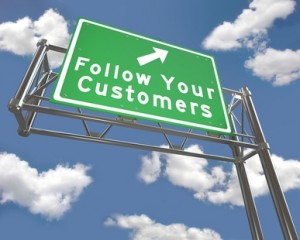 When times get tough, it can cost more to do business. Potential clients are less likely to want to talk to a salesperson because they are in a conservative mindset regarding spending. In recent months you may have heard the phrase “retention is the new acquisition”. This simply means you’re doing well if you can hold onto your clients. And, of course, you want to do all you can to retain your best ones.
When times get tough, it can cost more to do business. Potential clients are less likely to want to talk to a salesperson because they are in a conservative mindset regarding spending. In recent months you may have heard the phrase “retention is the new acquisition”. This simply means you’re doing well if you can hold onto your clients. And, of course, you want to do all you can to retain your best ones.
The best clients are the ones that appreciate your skills and service and are happy to pay willingly and promptly. It also helps if they have a recurring need for your services; most successful companies have worked to build a base of regular customers to generate consistent cash flow and bring more stability to business planning.
The best way to retain good clients is not to offer them a better price each time (although discounts for repeat business are always welcome). If your strongest connection is only price, you leave yourself open to a competitor undercutting you – perhaps with a loss-leading marketing campaign – and there isn’t much else to hold back clients from trying someone else.
The boom in loyalty programs that began in the airline business and has spread to nearly every gift store, supermarket and gym shows the importance of creating a database of regular clients that you can target with promotions. However, these require some investment in marketing resources to run and maintain. Loyalty programs themselves are not the best way to hold onto your valued clients.
Instead offer your best clients better service, something that is clearly beyond their expectations for the price they are paying. If you can meet their needs 110% then your clients will feel greater loyalty towards your firm and be much less likely to consider alternative suppliers.
Better service starts with doing what you have said you are going to do. Business shouldn’t be taken casually. Every deadline you meet and target you hit reinforces the trust with your client and strengthens the relationship.
Another relationship-building tactic is to communicate regularly with your top clients. Regular contact through email newsletters, for example, tells your clients you are actively working in their interests and keeping up with the pace of change.
And don’t forget to give your clients a chance to give feedback. Showing them you can listen and respond to their opinions makes them feel valuable to you.
Even if they feel you charge a slightly higher price, the value of better service ultimately means greater efficiency and better results for the client, and that has a clear financial value.
+Some information in this article is sourced from RAN ONE © 2011 Bullseye





